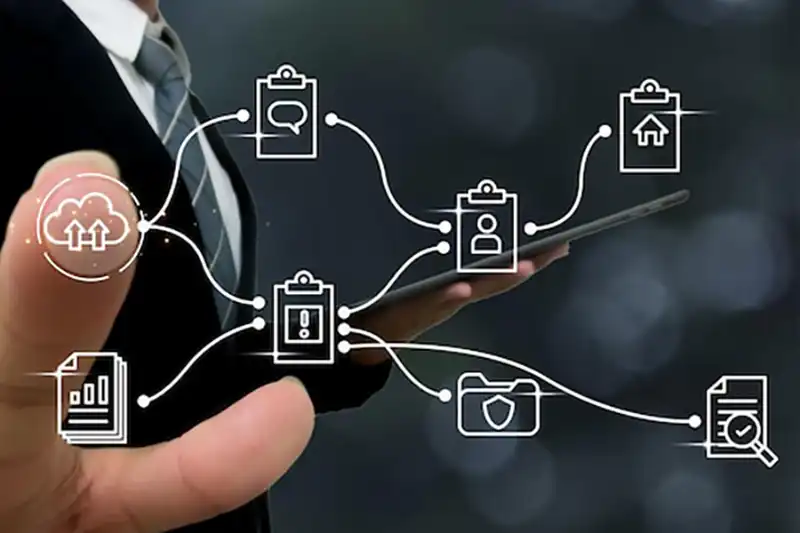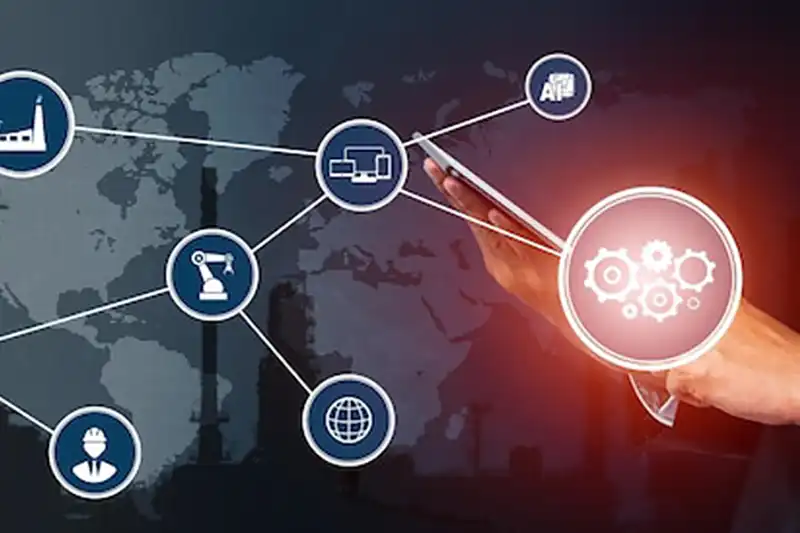In today’s fast-evolving industrial landscapes, efficient management of assets and operations is critical to maintaining competitive advantage. One of the most effective ways to streamline operations is through Centralized Monitoring and Decision-Making with MIMOSA Standards. By bringing all data from various systems and devices into a single, accessible framework, companies can improve decision-making, reduce downtime, and ensure smoother operations. One of the most powerful tools for achieving this is MIMOSA, an open standard that facilitates better integration, management, and maintenance of industrial networks. In this article, we will explore how MIMOSA helps enable Centralized Monitoring and Decision-Making with MIMOSA Standards, and why it is a game-changer for industrial organizations.
- Introduction: What is MIMOSA and How Does It Enable Centralized Monitoring?
MIMOSA (Maintenance, Information, Modeling, and Optimization for System Applications) is an open standard designed to enhance the management and optimization of industrial systems. It helps organizations streamline operations by integrating data from various systems, such as sensors, equipment monitoring tools, and asset management software.
Centralized Monitoring means that all the information generated by different devices and systems is gathered in a central location. This gives decision-makers a unified, real-time view of the network and operations. By utilizing MIMOSA standards, industries can break down silos between data sources and create a more efficient system for monitoring and decision-making. In practical terms, MIMOSA provides the framework needed to connect data from across your network, analyze it, and use it to make better, faster decisions that can positively impact performance and productivity.
- Key Features of MIMOSA That Support Centralized Monitoring and Decision-Making with MIMOSA Standards
MIMOSA provides several features that make Centralized Monitoring and Decision-Making with MIMOSA Standards possible and efficient:
- Data Integration and Interoperability: One of the primary strengths of MIMOSA is its ability to integrate data from a variety of sources. Whether you’re using sensors to track equipment health or enterprise systems to monitor inventory and logistics, MIMOSA allows all of this data to come together. This integration ensures that decision-makers have a complete, accurate picture of operations, making it easier to monitor and manage complex networks.
- Real-Time Data Access and Analysis: MIMOSA facilitates real-time data collection and analysis, enabling Centralized Monitoring and Decision-Making with MIMOSA Standards. By providing access to current information, businesses can quickly address emerging issues, minimizing downtime and avoiding expensive errors. This feature is particularly important in industries like manufacturing, energy, and utilities, where equipment performance directly impacts productivity.
- Standardized Data Models: MIMOSA defines standardized data models that make it easier to analyze and compare data from different systems. By creating a common language for systems to communicate, it ensures that the data being collected can be properly understood and acted upon by decision-makers.
- Predictive Analytics: Another key feature is the use of predictive analytics, which enables organizations to forecast potential failures and maintenance needs before they become critical. This predictive capability is critical for Centralized Monitoring and Decision-Making with MIMOSA Standards, as it allows leaders to take action before issues escalate.

- Benefits of Centralized Monitoring and Decision-Making with MIMOSA Standards
Implementing Centralized Monitoring and Decision-Making with MIMOSA Standards offers a number of significant benefits:
- Enhanced Operational Efficiency: By centralizing all data into a single framework, businesses can eliminate inefficiencies that arise when systems work in isolation. MIMOSA allows for better coordination across departments, improves communication, and enables faster decision-making. This results in smoother day-to-day operations and fewer delays.
- Reduced Downtime: MIMOSA’s real-time monitoring capabilities, combined with predictive maintenance, help prevent equipment failures before they happen. As a result, businesses experience less unexpected downtime, which can be costly. With a centralized system in place, teams can act quickly to address issues, minimizing disruptions to operations.
- Proactive Maintenance: Centralized Monitoring and Decision-Making with MIMOSA Standards also supports proactive maintenance. By identifying potential failures in advance, teams can schedule maintenance at the optimal time—before equipment breaks down. This reduces repair costs and extends the lifespan of critical assets.
- Better Resource Allocation: Having access to all data in one place helps businesses allocate resources more effectively. For instance, maintenance teams can be deployed to the areas that need attention most, and operational changes can be made quickly based on real-time data analysis.
- How to Implement Centralized Monitoring with MIMOSA Standards
Implementing Centralized Monitoring with MIMOSA Standards requires a systematic approach to ensure it integrates seamlessly with your existing infrastructure:
- Assess Current Systems: Start by evaluating the current systems and tools you’re using for asset management, monitoring, and data collection. Identify which systems need to be integrated into the MIMOSA framework to ensure smooth data flow and communication.
- Set Up Infrastructure: Implement the necessary hardware and software infrastructure to support MIMOSA. This includes installing sensors, monitoring systems, and enterprise platforms that can integrate with the centralized monitoring system. Ensure these systems are fully compatible with Centralized Monitoring and Decision-Making with MIMOSA Standards.
- Integrate Data Sources: Connect your existing data sources (sensors, machines, ERP systems, etc.) to the centralized platform. With Centralized Monitoring and Decision-Making with MIMOSA Standards, even disparate systems can communicate effectively, simplifying data integration.
- Training and Familiarization: Your team will need to be trained on how to use the centralized system effectively. Provide adequate training on the tools and technologies involved in the MIMOSA framework so your team can fully leverage the system for decision-making.
- Monitor and Optimize: Once everything is set up, continuously monitor the performance of the system using Centralized Monitoring and Decision-Making with MIMOSA Standards. Use the insights gathered from this approach to optimize operations and maintenance schedules, making adjustments as necessary to improve the system’s efficiency.
- Common Challenges in Centralized Monitoring and How MIMOSA Overcomes Them
While Centralized Monitoring and Decision-Making with MIMOSA Standards offers clear benefits, organizations may encounter a few challenges in its implementation:
- Data Overload: With all data coming into a centralized system, there’s the risk of being overwhelmed by large volumes of information. MIMOSA addresses this by offering advanced data analytics and filtering options, which help focus on the most relevant data for decision-making.
- System Integration Issues: Integrating legacy systems with new technologies can be challenging. MIMOSA helps bridge this gap by offering standardization and interoperability features, allowing older systems to work alongside newer tools seamlessly.
- User Adoption: Employees may resist new systems or feel overwhelmed by changes in workflows. To overcome this, it’s crucial to invest in proper training and provide clear, ongoing support to ensure smooth adoption.
- Scalability: As your business grows, your centralized monitoring system will need to scale. MIMOSA is designed to be flexible, meaning it can adapt to the growing needs of your organization without sacrificing performance.
Q&A Section:
Q: What industries can benefit most from Centralized Monitoring and Decision-Making with MIMOSA Standards?
A: Industries that depend on operational efficiency and effective asset management, such as manufacturing, oil and gas, utilities, transportation, and energy, can significantly benefit from Centralized Monitoring and Decision-Making with MIMOSA Standards.
Q: How does MIMOSA improve decision-making in industrial networks?
A: MIMOSA enhances decision-making by offering real-time, integrated data from across the network. This enables decision-makers to act swiftly and make well-informed choices based on comprehensive, accurate information, supported by Centralized Monitoring and Decision-Making using MIMOSA Standards.
Q: What tools are required to implement centralized monitoring with MIMOSA?
A: Tools required include data collection devices (sensors), monitoring software, asset management systems, and predictive maintenance tools. All of these should be compatible with MIMOSA standards for seamless integration.
Q: What are the long-term benefits of adopting MIMOSA for centralized monitoring?
A: The long-term benefits of Centralized Monitoring and Decision-Making with MIMOSA Standards include improved efficiency, reduced downtime, optimized resource allocation, and a more proactive approach to maintenance. Over time, businesses can expect lower costs and a more streamlined operation.
In conclusion, MIMOSA standards play a crucial role in enabling Centralized Monitoring and Decision-Making with MIMOSA Standards across industrial networks. By integrating disparate data sources and providing real-time insights, MIMOSA helps businesses improve operational efficiency, reduce downtime, and make better, more informed decisions. Whether you’re just getting started or looking to optimize your existing system, MIMOSA offers a powerful framework for centralizing your monitoring and maintenance efforts.
For more insights into centralized monitoring and asset management, visit wizland.


